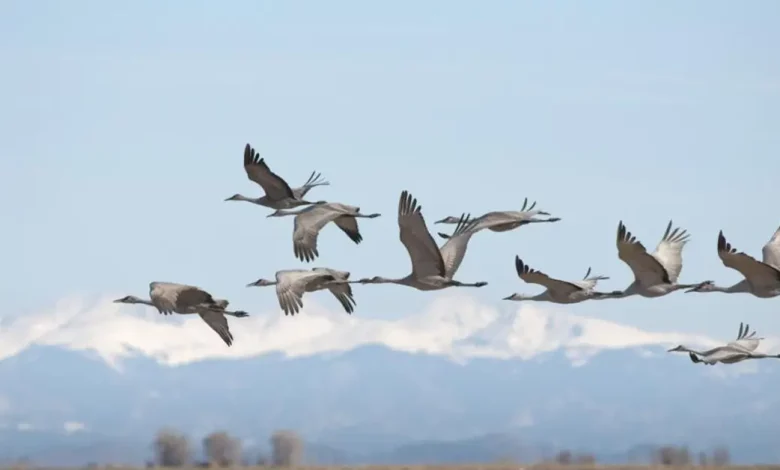Daily Current Affairs for UPSC
Climate change having devastating impact on migratory species
Syllabus: Environment and Ecology[GS Paper-3]

Context: The Convention on the Conservation of Migratory Species of Wild Animals (CMS) has released a report on migratory species during COP28.
Details of the report:
The consequences of climate change and biodiversity loss on migratory species:
- The poleward range shifts of terrestrial animals are affecting their habitats, food availability, and reproduction cycles.
- Migration timing is also changing, and African Elephants and Lions are experiencing higher parasite loads.
- Extreme weather conditions like heat waves and torrential rains are increasing the likelihood of deaths and survival for these species.
- The impact of temperature on the ability of animals to breed successfully and survive, particularly for temperature-sensitive species like penguins, turtles, and crocodiles.
- The increase in temperatures is impacting when and how much food, like plankton blooms, is available.
- Certain species that migrate are particularly susceptible to the effects of climate change, including cold-water copepods, little penguins, shags, migratory albatrosses (specifically Laysan and black-footed albatross), greater flamingos, bitterns, redshanks, Afro-Palearctic migratory passerines (specifically barn swallow chicks), krill, and northern lapwings.
- Birds hunted less and ate less when the temperatures were higher.
- Increased temperatures have been causing more deaths in Great Reed Warblers, but their breeding has been improving due to better rearing conditions.
- Climate change has a negative impact on land-dwelling mammals like ungulates and herbivores because it reduces rainfall and limits their access to food.
Some species play a crucial role in reducing the negative effects of climate change:
- Whales: Whales with long lifespans are important for capturing carbon, as each whale can remove approximately 0.062 megatonnes of carbon from the environment every year.
- Bats: Bats play a role in preserving biodiversity by dispersing seeds.
- Saiga antelopes: Saiga antelopes contribute to the health of grasslands by preventing wildfires.
- Vultures: Vultures aid in reducing the transmission of diseases and the risk of zoonotic diseases spreading to humans.
About Conservation of Migratory Species (CMS) or Bonn Convention:
- It is an environmental treaty of the United Nations, with 129 countries and the European Union as its members. The latest country to join this treaty is Maldives.
- CMS offers a global platform for the conservation and sustainable use of migratory animals and their habitats.
- It brings together the Range States, which are the countries through which these animals pass, to establish a legal framework for internationally coordinated conservation efforts spanning the entire migratory range.
- As the singular global convention dedicated to the preservation of migratory species, their habitats, and migration routes, CMS collaborates and works in conjunction with various international organisations, NGOs, media partners, and corporate entities.
- Migratory species facing the risk of extinction are included in Appendix I of the Convention.
- Migratory species that require or would greatly benefit from international collaboration are included in Appendix II of the Convention.
Conclusion:
This report emphasises the urgency for immediate and collaborative global efforts to minimise these impacts and safeguard the future of migratory species.
Source: DTE





.png)



